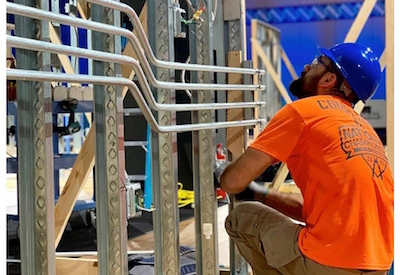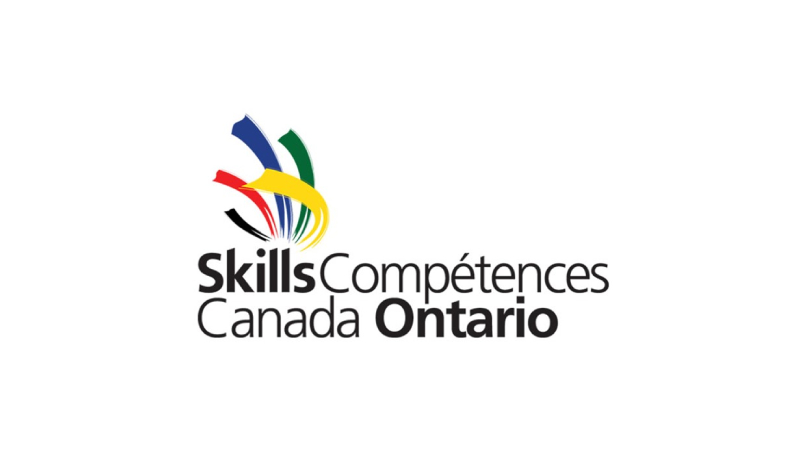Guillevin Code Series – New Rules Around GCFIs

September 25, 2023
By William (Bill) Burr[i]
[i] William (Bill) Burr is an associate member of the Canadian Electrical Code, Part 1, Technical Committee and formerly Chair of the Canadian Advisory Council on Electrical Safety (CACES), Chief Electrical and Elevator Inspector for the Province of BC & the Northwest Territories, Director of Electrical and Gas Standards Development and Director of Conformity Assessment at CSA Group. Bill can be reached at Burr and Associates Consulting billburr@gmail.com..
Guillevin Code Series
New rules around GCFIs: Outdoor Receptacles, Receptacles Within 2.5 Meters of Finished Grade, Branch Circuits Below Grade and Flood Hazards – Canadian Electrical Code, Part 1[i], 25th
The 2021 edition of the CE Code, Rule 26-704 – Protection of Receptacles by A Ground Fault Circuit Interrupter of The Class A Type, subrule 1, requires that all 15A and 20A receptacles within 2.5 meters of finished grade be protected by Class A type GCFI.
Note that a Class A Ground Fault Circuit Interrupter will interrupt the circuit to the load, within a predetermined time, when the ground fault current is 6 mA or more but not when the ground fault current is 4 mA or less. The requirement for Class A GFCI protection is not intended to apply to receptacles supplying specific-use appliances located behind such appliances as washers, dryers, fridges, ranges, built-in microwaves, and other similar appliances, provided that those receptacles, by their location, are rendered essentially inaccessible for use by other portable appliances.
Additionally, as per new subrule 2 of Rule 26-704, vehicle heater receptacles are no longer excluded from GFCI requirements. Previously this rule only applied to residential areas, now it applies to all areas. This is an important change for safety. It doesn’t matter what the classification is, the hazard is the same whether it’s a parking lot, commercial building, amusement park, etc.
For receptacles intended for vehicle heaters installed per Rule 8-400 Branch Circuits and Feeders Supplying Heater Receptacles for Vehicles Powered by Flammable or Combustible Fuels, it should be noted that CSA Part II Standards C22.2 No. 191 – Engine Heaters and Battery Warmers, permits specified heaters with sheathed heating elements to leak 4 mA of current for the first 10 min after power is applied. If two or more heaters are protected by the same Class A GFCI device, the cumulative leakage current at power-on may result in tripping. Tripping of the GFCI device can also be an indication that replacement or maintenance of the heater or heaters is required.
Along with new rules surrounding electrical equipment that has been exposed to ingress of water, there are a few new rules surrounding flood hazard zones. Two new items added to Section 0 – Definitions include:
Flood elevation — elevation of surface water resulting from a flood event designated by provisions of the National Building Code of Canada or provincial or territorial building codes, local building or zoning regulations, or local flood-proofing policies. A flood elevation corresponds to a flood hazard zone and may be driven by rivers surpassing their banks, precipitation exceeding storm water capacity, ice jamming, sea level rise, and storm surging.
Flood hazard zone – A flood hazard zone is designated by provisions of the provincial or territorial building codes, local building or zoning regulations, or local flood-proofing policies. Various terminology is used to define flood hazard zones, including floodplains, floodways, and flood fringes. Maps may be available in some jurisdictions to define floodplains corresponding to a certain return period.
New subrule 3 of Rule 2-032 – Damage and Interference, requires that Electrical equipment exposed to water ingress be evaluated to the original standard to which it was approved by an organization, acceptable to the Authority Having Jurisdiction, to determine whether the equipment may be placed back into service.
New subrule 1) c) v) of Rule 6-206 – Consumer’s Service Equipment Location, stipulates that a service box cannot be located in areas below the flood elevation as designated by local floodplain management regulations or bylaws. This provides for effective and safe disconnection of the service entrance equipment during a flood event to prevent flood water from affecting access to the service disconnecting means.
New Rule 26-652 – Branch Circuits Below Ground Level in Areas Designated as Flood Hazard Zones, requires that branch circuits located below grade level in flood zones have ground fault protection to de-energize all normally ungrounded conductors with a ground fault setting sufficient to allow normal operation of the connected loads under normal conditions. Ground fault protection is a means of detecting and interrupting a ground fault current at a level less than the current required to operate the circuit overcurrent device. This Rule does not necessarily require Class A GFCI protection. However, it does not specify that Class A GFCI protection is prohibited. As above, flood hazard zones are designated by local floodplain management regulations or bylaws. management regulations or local by-laws
New Rule 26-712 – Sump Pump Receptacles requires, that for buildings in a flood zone, sump-pump receptacles are to be located above the flood elevation or be marked as suitable for submersion.
The Authority Having Jurisdiction in a particular region is responsible for establishing the process of identifying flood hazard zones and flood elevations throughout the country. As noted above, local floodplain management regulations or bylaws usually determine this.
These changes are an example of how the Canadian Electrical Code is adapting to climate change. The World Resources Institute predicts that flood damage in Canada could cost urban areas $8.8 Million by 2030.
[i] Source: CSA C22.1:21, Canadian Electrical Code, Part 1 – Safety Standard for Electrical Installations. © 2021 Canadian Standards Association. Please visit Store – CSA Group. With the permission of CSA Group, material is reproduced from CSA Group standard CSA C22.1:21, Canadian Electrical Code, Part 1 – Safety Standard for Electrical Installations. This material is not the complete and official position of CSA Group on the referenced subject, which is represented solely by the Standard in its entirety. While use of the material has been authorized, CSA Group is not responsible for the manner in which the data are presented, nor for any representations and interpretations. No further reproduction is permitted. For more information or to purchase standard(s) from CSA Group, please visit Store – CSA Group or call 1-800-463-6727.
Recommended
Guillevin Code Series: New Rules Surrounding Farm Buildings Housing Livestock

In response to several high-profile barn fires, the Ontario Ministry of Agriculture, Food and Rural Affairs (OMAFRA) formed the Reducing the Risk of Barn Fires Advisory Panel, to consider the next steps for government, agencies, and farm owners to help reduce the risk of barn fires and the loss of animals. Read More
















